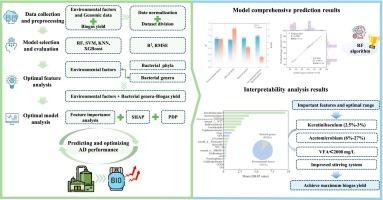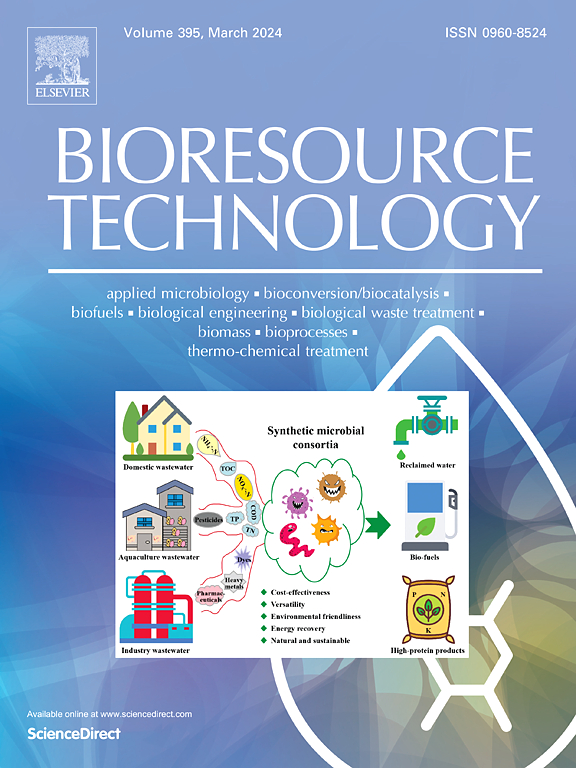探索环境和微生物因素对厨余厌氧发醇性能的交互影响:可解释的机器学习模型。
IF 9.7
1区 环境科学与生态学
Q1 AGRICULTURAL ENGINEERING
引用次数: 0
摘要
厌氧消化(AD)的沼气产量涉及连续而复杂的生物反应。传统的线性模型无法定量评估这些因素对厌氧消化性能的交互影响。为了进一步探索目标变量与厌氧消化性能之间的内在关系,本研究开发了四个机器学习模型来预测沼气产量,并考虑了各种因素之间的相互作用。结果表明,将细菌菌属数据集与环境因素相结合,AD 性能的预测准确率最高。随机森林模型的准确率最高,其测试决定系数为 0.9879。在两类输入特征中,细菌属对沼气产量的影响占 89.9%,其次是环境因素。结果显示,Keratinibaculum 和 Acetomicrobium 是关键细菌。建议将挥发性脂肪酸控制在 2000 毫克/升以下,并改进厌氧消化工艺中的搅拌系统,以获得最高的沼气产量。本文章由计算机程序翻译,如有差异,请以英文原文为准。

Exploring interactive effects of environmental and microbial factors on food waste anaerobic digestion performance: Interpretable machine learning models
Biogas yield in anaerobic digestion (AD) involves continuous and complex biological reactions. The traditional linear models failed to quantitatively assess the interactive effects of these factors on AD performance. To further explore the internal relationship between target variables and AD performance, this study developed four machine learning models to predict biogas yield and consider the interaction among various factors. Results indicated that the highest prediction accuracy of AD performance was achieved by adding bacterial genera dataset with environmental factors. Random forest model exhibited the highest accuracy, with the testing coefficient of determination equal to 0.9879. Among two types of input features, the bacterial genera accounted for 89.9 % of the impact on biogas yield, followed by environmental factors. The results revealed Keratinibaculum and Acetomicrobium as critical bacteria. The volatile fatty acid controlled below 2000 mg/L and the improved stirring system in AD process were recommended to achieve maximum biogas yield.
求助全文
通过发布文献求助,成功后即可免费获取论文全文。
去求助
来源期刊

Bioresource Technology
工程技术-能源与燃料
CiteScore
20.80
自引率
19.30%
发文量
2013
审稿时长
12 days
期刊介绍:
Bioresource Technology publishes original articles, review articles, case studies, and short communications covering the fundamentals, applications, and management of bioresource technology. The journal seeks to advance and disseminate knowledge across various areas related to biomass, biological waste treatment, bioenergy, biotransformations, bioresource systems analysis, and associated conversion or production technologies.
Topics include:
• Biofuels: liquid and gaseous biofuels production, modeling and economics
• Bioprocesses and bioproducts: biocatalysis and fermentations
• Biomass and feedstocks utilization: bioconversion of agro-industrial residues
• Environmental protection: biological waste treatment
• Thermochemical conversion of biomass: combustion, pyrolysis, gasification, catalysis.
 求助内容:
求助内容: 应助结果提醒方式:
应助结果提醒方式:


